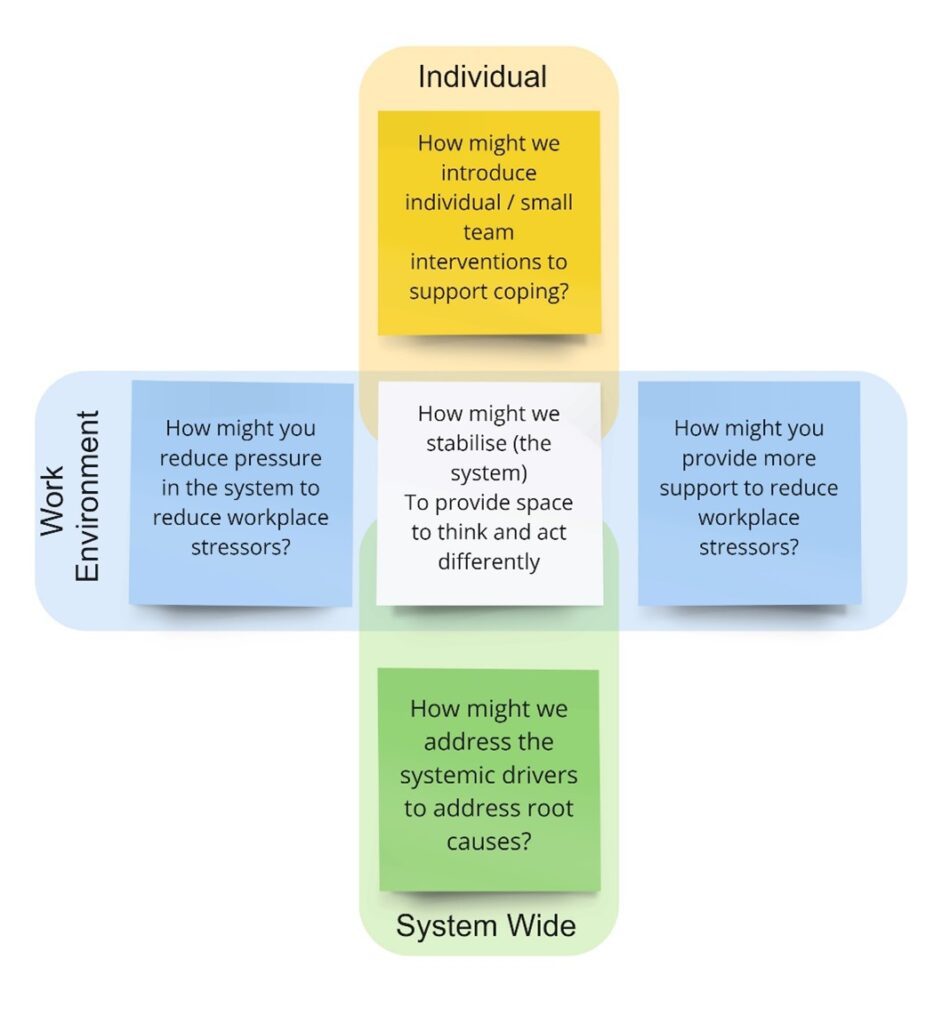Living with COVID, recovery, post-COVID, and the new normal are all terms to make sense of people’s everyday experiences during these turbulent times. No matter the words, the culmination of the last few years and the current uncertainty have left many feeling overworked, undervalued, and overwhelmed.
Innovation and adaptation are needed to address our complex challenges, but both require energy, stability, rest and space. However, how do we do this when we feel burnt out, uncertain and time-poor? Here are three ideas to help you to think about where to intervene to shift your team or organisation.
Support individual coping
How might you introduce individual / small team interventions to support well-being and coping? There is a lot written in this space, but you might like to ask your staff first what is already working that you could build on. Remember, strategies at this level support coping but do not address why it is required. Coping is critical but on its own will have limited impact on the reason staff are feeling overwhelmed.
Start by asking:
- Eating well (including limiting alcohol consumption)
- Undertaking regular exercise
- Looking after emotional well-being through meditation or other practices?
Address workload
This is the realm of the work environment where you can identify and hopefully address what is creating the need for people to cope. There are two related questions to consider:
- By reducing pressure: How might you reduce input pressure in the system to reduce workplace stressors?
- By increasing support: How might you provide more support to reduce workplace stressors?
Start by asking:
- Do my staff or I have the prerogative to take time off?
- Do my staff or I have the resources to meet work expectations?
- Do we have a level of psychological safety that enables people to feel included and able to speak up (even when it might be unpopular)?
- How might we simplify the process?
Address the root cause
Looking for a long-term fix? You need to look beyond the work environment and consider what is creating, driving, or enabling the excessive workload in the first place. Often the systemic drivers are outside of the direct workplace. Spoiler alert, systemic interventions are complex, require time, and collaboration across different stakeholders and often trigger loss.
Start by asking:
- What are the policies, rules, processes, incentives, cultural norms, sanctions, etc. that most influence behaviours?

This blog is based on The Integrated Stabilisation Framework, which emerged from a recent Uncharted Leadership project. The framework can help us understand the leverage points that support the move from burnout to coping. It builds on an earlier Blog exploring the Energy Development Response Model.